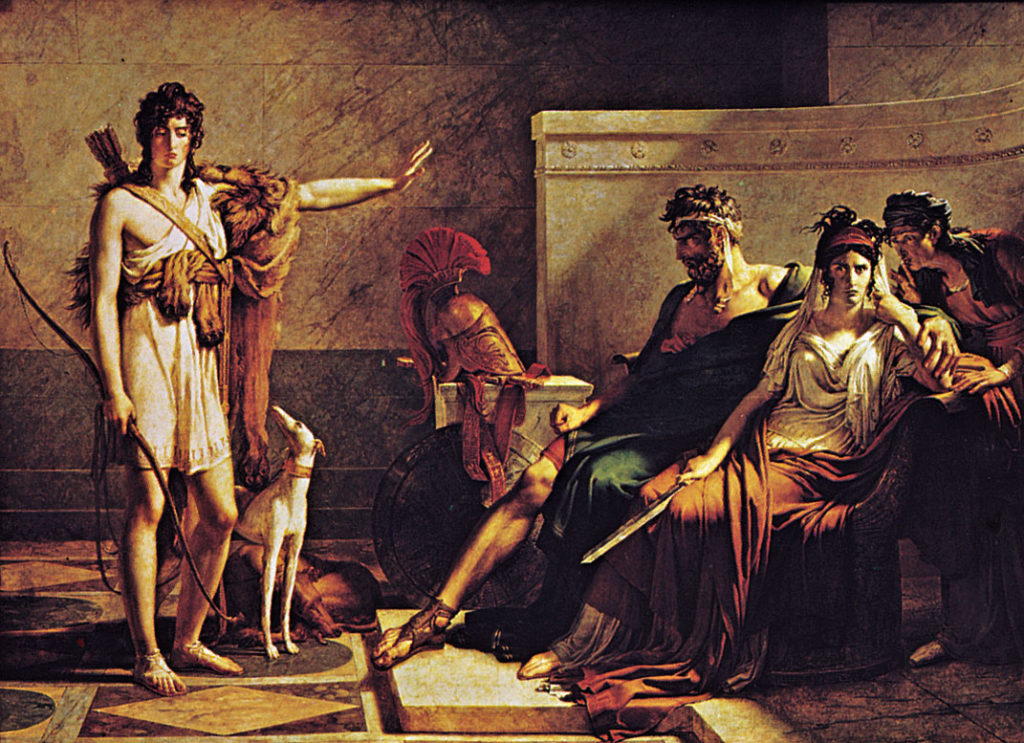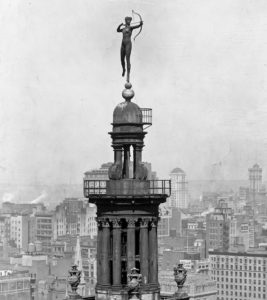2022.01.31 | By Gregory Nagy
§0. This standalone essay is an annotation for Pausanias 2.32.3–4, where our traveler makes comments on a hero cult of Phaedra, not only of Hippolytus, at Troizen. What Pausanias says in this passage is most relevant, I think, to what we read in the Hippolytus of Euripides at lines 1423–1430, where the words spoken by the goddess Artemis can be interpreted as a prophecy of such a hero cult. In the text of Euripides, only the hero cult of Hippolytus is made explicit, but the wording of Pausanias indicates, I think, that the hero cult of Phaedra is implicit even in the wording of Euripides. My essay here is extracted from a longer essay (Nagy 2018.08.03) that connects with a shorter essay (Nagy 2018.08.10) in which I outline the relevant subject of a new book I am planning, Ancient Greek Heroes, Athletes, and Poets.

§1. Here is my working translation of Pausanias 2.32.3–4, where he speaks of an enclosure containing spaces that are sacred to both Hippolytus and Phaedra as cult heroes:
{2.32.3} In the other part of the enclosure [peribolos] is a racecourse [stadion] named after Hippolytus, and looming over it is a shrine [nāos] of Aphrodite [invoked by way of the epithet] kataskopiā [‘looking down from the heights’]. Here is the reason [for the epithet]: it was at this very spot, whenever Hippolytus was exercising-naked [gumnazesthai], that she, Phaedra, feeling-an-erotic-passion-for [erân] him, used-to-look-away-and gaze [imperfect of apo-blepein] at him from above. A myrtle-bush [mursinē] still grows here, and its leaves—as I wrote at an earlier point [= 1.22.2]—have holes pricked into them. Whenever Phaedra was-feeling-there-was-no-way-out [aporeîn] and could find no relief for her erotic-passion [erōs], she would take it out on the leaves of this myrtle-bush, wantonly injuring them.
{2.32.4} There is also a tomb [taphos] of Phaedra, not far from the tomb [mnēma] of Hippolytus, and it [= the mnēma] is heaped-up-as-a-tumulus [kekhōstai] near the myrtle-bush [mursinē]. The statue [agalma] of Asklepios was made by Timotheus, but the people of Troizen say that it is not Asklepios, but a likeness [eikōn] of Hippolytus. Also, when I saw the House [oikiā] of Hippolytus, I knew that it was his abode. In front of it is situated what they call the Fountain [krēnē] of Hēraklēs, since Hēraklēs, as the people of Troizen say, discovered the water.
§2. In my commentary here on Pausanias 2.32.3–4, I rewrite what I wrote in my earlier essay (again, Nagy 2018.08.03), rearranging the sequence of paragraphs.
§3. When Phaedra sees Hippolytus for the very first time in the narrative of Pausanias 2.32.3, as I noted in an even earlier essay (Nagy 2018.06.21), she is already falling in love with the youthful hero. In that essay, I was worrying about the translation ‘fall in love’ for erân/erâsthai in the “present” or imperfective aspect of the relevant verb used by Pausanias—and for erasthênai in its aorist aspect, as he uses it elsewhere.
§4. In the essay from which the present essay is extracted (that is, from Nagy 2018.08.03), I continued to worry about the translation ‘fall in love’—and I continued to prefer the wording ‘conceive an erotic passion’ as a more accurate way to capture the moment. Already in that essay, however, I worried more about the actual moment of erotic passion in Pausanias 2.32.3. And I worry still now, since I see that moment as really a recurrence of moments. The storytelling of Pausanias points to an untold number of moments for experiencing the erotic passion—as expressed by the “present” or imperfective aspect of the verb, erân, and by the imperfect tense of the verb apo-blepein ‘gaze away, look off into the distance’. Further, there is a divine force that presides over all these moments, embodied in the sacralized role of Aphrodite as the kataskopiā, ‘the one who is looking down from on high’.
§5. Next, I turn to Pausanias 2.32.4, where our traveler speaks of the enclosure containing the spaces that are sacred to both Hippolytus and Phaedra as cult heroes. He says explicitly that he saw the tomb of Phaedra, and that this tomb was situated next to the myrtle-bush that marks her recurrent passion. And Pausanias also says, however guardedly, that he saw the tomb of Hippolytus himself, situated next to the tomb of Phaedra. Our traveler is guarded because, as he said earlier at 2.32.1 about the hero cult of Hippolytus, the people of Troizen ‘do not show [apophainein] his tomb [taphos], though they know where it is’. In the wording of Pausanias, oikiā ‘house’ can refer to the ‘abode’ of a cult hero, that is, to his tomb. And he ostentatiously uses this word here at 2.32.4 in referring to the tomb of Hippolytus. A telling parallel is the wording at Pausanias 2.23.2, where he refers to the tomb of the cult hero Adrastos as an oikiā while he calls the nearby tomb of Amphiaraos simply a hieron ‘sanctuary’—and while, even more simply, he refers to the nearby tomb of Eriphyle, wife of Amphiaraos, as a mnēma, the literal meaning of which is ‘memorial marker’. This same word mnēma is used by Pausanias here at 2.32.4 with reference to the tomb of Hippolytus. Other examples where oikiā refers to tombs of cult heroes include 2.36.8, 5.14.7, 5.20.6, 9.11.1. 9.12.3. 9.16.5. 9.16.7.
§6. Returning to Pausanias 2.32.3, I conclude by arguing that the role of the goddess Aphrodite in the visualization of Phaedra’s recurrent erotic passion complements the role of the goddess Artemis in a visualization that we see being brought to life in the poetry of Euripides. Whereas the role of Aphrodite is to be always available as the agent of erotic desire, the corresponding role of Artemis is to maintain her eternal unavailability as the object of that desire. Always unavailable, Artemis thus becomes the very picture of what is erotically desirable.

3 responses to “Pausanias 2.32.3-4, on the hero cults of Phaedra and Hippolytus at Troizen”
Leave a Reply
You must be logged in to post a comment.
[…] Nagy, G. 2022.01.31. “Pausanias 2.32.3-4, on the hero cults of Phaedra and Hippolytus at Troizen.” Classical Continuum. https://continuum.fas.harvard.edu/annotation-for-pausanias-2-33-34-on-the-hero-cults-of-phaedra-and-…. […]
[…] Nagy, G. 2022.01.31. “Pausanias 2.32.3-4, on the hero cults of Phaedra and Hippolytus at Troizen.” Classical Continuum. https://continuum.fas.harvard.edu/annotation-for-pausanias-2-33-34-on-the-hero-cults-of-phaedra-and-…. […]
[…] Nagy, G. 2022.01.31. “Pausanias 2.32.3-4, on the hero cults of Phaedra and Hippolytus at Troizen.” Classical Continuum. https://continuum.fas.harvard.edu/annotation-for-pausanias-2-33-34-on-the-hero-cults-of-phaedra-and-…. […]